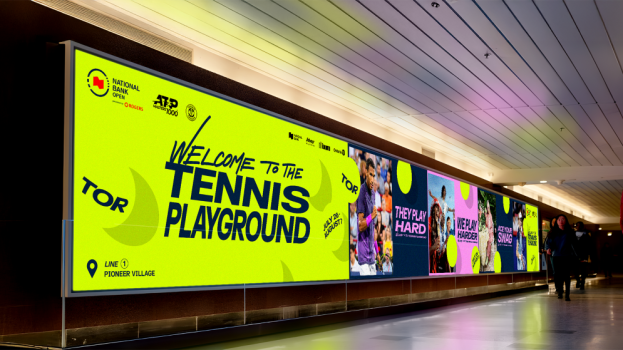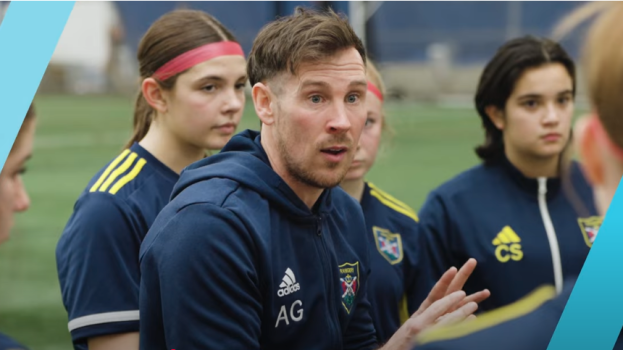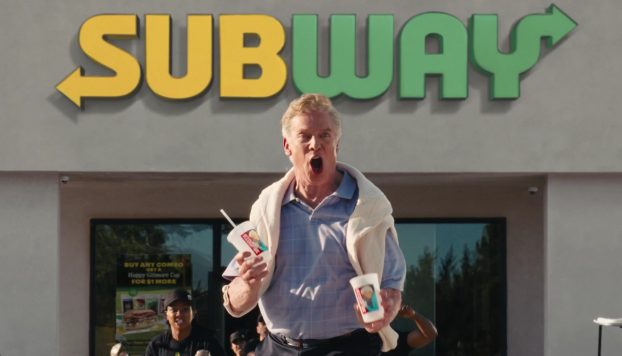Ask any Torontonian what a Raptor is, and they are likely to mention basketball. But if you ask them what a Lynx is, they are likely to mention the zoo. In terms of awareness, the Toronto Lynx Soccer Club isn’t exactly high on the radar screen of the average sports enthusiast, but the organization hopes to make inroads through a new online initiative, including an e-newsletter, that is geared at consumers involved in the sport at a grassroots level.
According to Dennis Edell, president of Partners and Edell, the squad’s Toronto-based AOR, there are 400,000 registered soccer players in Ontario. (And that doesn’t even include the soccer Moms.) When it comes to participation, soccer actually beats out Canada’s national game, and Edell believes its rampant popularity provides an opportunity that the Lynx, which averages 3,000 spectators a game, can leverage.
The Toronto Lynx Soccer Club belongs to the professional men’s North American A-League, which is part of the umbrella organization of the 16-year-old Tampa-based United Soccer Leagues. The team plays in the Northeast Division within the Eastern Conference, against competitors like the Montreal Impact, the Pittsburgh Riverhounds, and the Rochester Raging Rhinos.
The club has been diligently collecting e-mails and phone numbers from on-site contests and minor soccer programs since its inception seven years ago. Mike LeBlanc, director of sales and marketing for the team, says it has gathered between 40,000 and 50,000 names, although only 20% of them include e-mail addresses at this time.
The hope is to inflate that e-mail database to 50,000 by the end of the season and increase attendance and revenue by 25%, through online sales of tickets and merchandise, and the addition of new sponsors.
‘We can’t afford big media campaigns, so we focus on one-on-one relations,’ explains LeBlanc. Since most major local media outlets pretty much ignore the Lynx, he points out that the new Web-based efforts supply a line of communication between the fans and the club, which can inform them about upcoming games, as well as contests and promos.
LeBlanc says there is some exposure in the Toronto Star and Toronto Sun, but that media organizations believe more spectators are needed for coverage. ‘It’s a chicken-and-egg scenario,’ he explains. ‘We need more attendance to [interest] media, but we need the coverage to get more [fans]. It’s a delicate balance we’re trying to work with.’ If the online venture is successful in drawing crowds, the media reports will follow, says LeBlanc.
The very first online-initiated contest launched in late November; recipients can enter to win a Lynx jersey from Inaria, the squad’s new Toronto-based equipment sponsor. When the spring season kicks off, Via Rail will come onboard to hand out train tickets to Montreal, where fans can catch the Lynx in action on the road. Through the e-newsletter, the Lynx also aims to get reaction about the spectator experience, although later on, they may venture into amassing demographic details.
LeBlanc is hoping to get the word out about the online community via advertising garnered through barter agreements with media companies, such as the transit daily Metro Today and Fox Sports Net, which broadcast A-League soccer battles last season. (In the past, Metro Today received visibility on pocket schedules, in programs and on stadium signage in exchange for print advertising.)
Aside from endorsing the e-newsletter, the objective is to build the league’s overall reputation through all creative, says Edell. ‘[The message will be] that it’s the same excitement and non-stop play you see in professional leagues.’
A new Lynx logo and brand identity, from Partners and Edell, further communicate this point. Formerly, the Lynx logo was cartoony, but the organization wanted something ‘more traditional and professional like a European crest.’ Today’s version portrays a fierce-looking feline, and is much sleeker than the original.
Fans were involved in the design process too. In October, they were invited to submit creative ideas, and each respondent (there were between 15 and 20 in total) was rewarded with a free Lynx-branded mini soccer ball from Inaria. The final product incorporated some of these elements, says LeBlanc, who adds that welcoming the feedback from fans is just another example of the team’s overall one-on-one philosophy.
Each year, the club hosts soccer clinics with up to 100 schools, as well as minor soccer leagues. ‘Everything is very hands-on – that’s the way to connect with the consumer,’ says LeBlanc. ‘We provide them with information that they can take home and use.’ Currently, the Lynx is searching for partners to foot the bill for some of next season’s clinics, which cost between $2,000 and $5,000 each.
There are already approximately 25 corporate sponsors who participate in some fashion with the squad, including Sunoco, Tim Hortons and Playdium. Last season, Tim Hortons bused in tykes from its TimBits league and the five-year-olds played a ‘mini-game’ during half-time intermission.
A similar, well-recognized event occurs during NHL games at the Air Canada Centre, but in this case there is more involvement from the Lynx players themselves, who form a tunnel on the field and high-five the keyed up tykes as they run by. ‘That normally doesn’t happen in sports,’ says LeBlanc. ‘Kids would never be able to meet the players and get tips from them directly.’ That personal touch is exactly what could help the Lynx pack its stadium.























